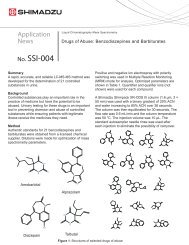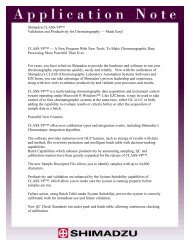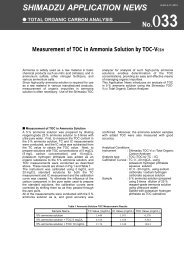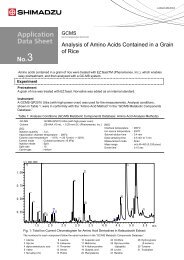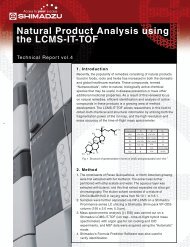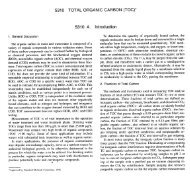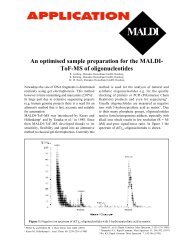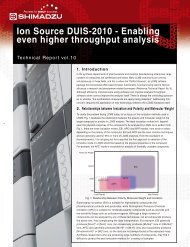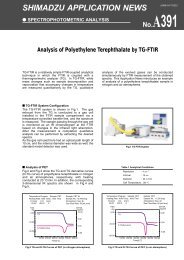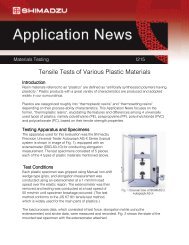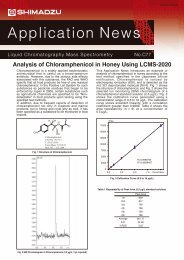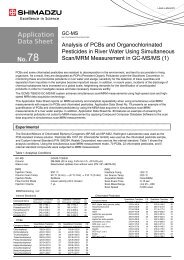The HPLC Determination of Salicin and Polyphenolic ... - Shimadzu
The HPLC Determination of Salicin and Polyphenolic ... - Shimadzu
The HPLC Determination of Salicin and Polyphenolic ... - Shimadzu
You also want an ePaper? Increase the reach of your titles
YUMPU automatically turns print PDFs into web optimized ePapers that Google loves.
Figure 1: Simultaneous PDA (UV 210, 268nm) <strong>and</strong> ELSD-LT chromatograms obtained for<br />
commercial White Willow bark extract.<br />
Results <strong>and</strong> Conclusion<br />
<strong>Salicin</strong> shows two absorbance maxima in the UV, 210 <strong>and</strong> 268nm. Figure 1 shows a<br />
comparison <strong>of</strong> the chromatographic pr<strong>of</strong>iles <strong>of</strong> ELSD with those two wavelengths. Here, the<br />
ELSD-LT reveals a number <strong>of</strong> non-chromophoric constituents eluting later than the salicin.<br />
Based upon their retention mechanism with this column chemistry, akin to a saccharide series,<br />
these are presumably polyphenolic glucosides [2] .<br />
While salicin may be determined using either detector, the myriad <strong>of</strong> salix constituents<br />
are revealed by the evaporative light scattering detector alone. As illustrated by the data, a<br />
compromise would be appropriate to balance the detector selectivity <strong>and</strong> sensitivity with<br />
baseline response when using a UV detector. This is a common situation. Conversely, the<br />
ELSD is immune to changes in solvent bulk properties <strong>and</strong> also yields better sensitivity toward<br />
the constituent chemicals <strong>of</strong> salix alba.<br />
SSI-<strong>HPLC</strong> -AN-002



